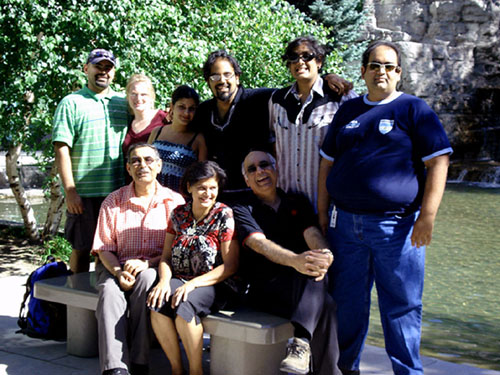Scientists report that they have identified the world's largest colony of leatherback sea turtles in Africa.
A recent survey has revealed that Gabon, West Africa, has between 15,730 and 41,373 female turtles using its nesting beaches.
The research was led by the University of Exeter working in collaboration with the Wildlife Conservation Society (WCS) which spearheads the Gabon Sea Turtle Partnership, a network of organisations concerned with the protection of marine turtles in Gabon
During three nesting seasons between 2002 and 2007, the team's members carried out the most comprehensive survey of marine turtles ever conducted in Gabon.
Their work involved aerial surveys along Gabon's 600 km (372 mile) coast, using video to capture footage for evaluation, and detailed ground-based monitoring. They estimated the number of nests and nesting females and also identified the key sites for leatherback nesting.
Lead author on the paper, Dr Matthew Witt of the University of Exeter, said: "We knew that Gabon was an important nesting site for leatherback turtles but until now had little idea of the size of the population or its global ranking."
He added, "We are now focusing our efforts on working with local agencies to coordinate conservation efforts to ensure this population is protected against the threats from illegal fisheries, nest poaching, pollution and habitat disturbance, and climate change."
The study also revealed that around 79 per cent of the nesting occurs within National Parks and other protected areas. This gives added hope that Gabon can continue to be one of the world's most important countries for these magnificent creatures.
Dr Angela Formia of the Wildlife Conservation Society, a co-author of the paper, said: "These findings show the critical importance of protected areas to maintain populations of sea turtles. Gabon should be commended for creating a network of National Parks in 2002 that have provided a sanctuary for this endangered species as well as other rare wildlife."
Trinidad & Tobago is one of the few sites in the world that the huge sea creatures choose to lay their eggs. They come onshore at Matura and other north coast beaches in Trinidad and also at selected beaches in Tobago.
A recent survey has revealed that Gabon, West Africa, has between 15,730 and 41,373 female turtles using its nesting beaches.
 |
| A beach in Gabon, West Africa |
During three nesting seasons between 2002 and 2007, the team's members carried out the most comprehensive survey of marine turtles ever conducted in Gabon.
Their work involved aerial surveys along Gabon's 600 km (372 mile) coast, using video to capture footage for evaluation, and detailed ground-based monitoring. They estimated the number of nests and nesting females and also identified the key sites for leatherback nesting.
Lead author on the paper, Dr Matthew Witt of the University of Exeter, said: "We knew that Gabon was an important nesting site for leatherback turtles but until now had little idea of the size of the population or its global ranking."
He added, "We are now focusing our efforts on working with local agencies to coordinate conservation efforts to ensure this population is protected against the threats from illegal fisheries, nest poaching, pollution and habitat disturbance, and climate change."
The study also revealed that around 79 per cent of the nesting occurs within National Parks and other protected areas. This gives added hope that Gabon can continue to be one of the world's most important countries for these magnificent creatures.
Dr Angela Formia of the Wildlife Conservation Society, a co-author of the paper, said: "These findings show the critical importance of protected areas to maintain populations of sea turtles. Gabon should be commended for creating a network of National Parks in 2002 that have provided a sanctuary for this endangered species as well as other rare wildlife."
Trinidad & Tobago is one of the few sites in the world that the huge sea creatures choose to lay their eggs. They come onshore at Matura and other north coast beaches in Trinidad and also at selected beaches in Tobago.
About leatherback turtles:
- The leatherback is the largest sea turtle, reaching up to nearly two metres (6.5 feet) in length and 540kg (1190 pounds) in weight
- Unlike other sea turtles, the leatherback does not have a hard shell. Its shell is made-up of a mosaic of small bones covered by firm, rubbery skin with seven longitudinal ridges
- Leatherbacks are the most widely spread marine turtles, and are found in the Pacific, Indian and Atlantic oceans, particularly in tropical regions
- Leatherbacks are the deepest diving of all sea turtles. The deepest recorded dive is 1.2 kilometres (3/4 mile), which is slightly more than the deepest known dive of a sperm whale
- As with other reptiles, the sex of leatherbacks is determined by the temperature of eggs during incubation. With leatherbacks, temperatures above 29 degrees centigrade (84 degrees Fahrenheit) will result in female hatchlings
- Leatherbacks are strong swimmers and tagged individuals have been known to cross ocean basins and are known to travel many thousands of kilometres in search of their jellyfish prey
Source: ScienceDaily.com





No comments:
Post a Comment